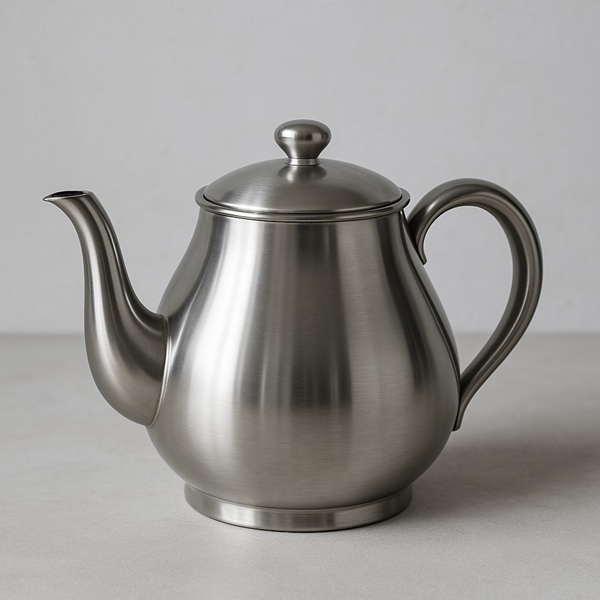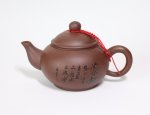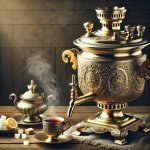Sassafras Tea
When drinking Sassafras tea, the surprise comes on the first sip. Who would imagine that a cleansing tea would taste like a soft drink?
Well, this tea does! This medicinal infusion tastes like the long known root beer because the root used to prepare this tea is also used to flavour root beer.
Let’s take a deeper look into the story behind this herbal tea and what it can offer you and your family.
What is Sassafras?
Sassafras (sassafras albidum in Latin) is a deciduous tree, from the Lauraceae family and native to eastern North America and eastern Asia. You may also know it as ague tree, root beer tree, saloop, white sassafras, cinnamon wood, sarifrax or smelling-stick.
Sassafras trees can be very impressive, as they grow from 9.1 to 18 meters (30-59 feet) tall and spreading 7.6 to 12 meters (25-39 feet), with many slender branches and a smooth and spongy orange-brown bark.
A curious peculiarity about these trees is that they possess three distinct leaf patterns, with smooth margins that grow 7-20 cm long by 5-10 cm broad.
Tiny greenish yellow flowers, with five petals bloom in the spring and a small egg-shaped fruit, 1cm long, produced on long red-stalked cups, reaches maturity in late summer.
Due to its unusual leaves and also the aromatic scent produced when the bark, roots, branches, leaves, flowers or fruits are crushed, sassafras tea is often used as an ornamental tree. After all, these trees are relatively easy to grow, so they will add a bit of colour to your garden.
Sassafras Tea – A Cup of History
Sassafras tree bark has been used in North America for centuries. According to an old Appalachian folk legend, those who carried sassafras bark in their pockets or drank sassafras root tea were protected against the evil eye, malevolence and envy.
It was also used by the Cherokee people as a blood thinner to purify blood, to treat skin diseases, rheumatism, among other ailments.
In 1512, American Indians introduced the Spanish explorer Ponce de Leon to the bark and years later the same happened to pioneers, who settled on the continent.
Whether or not this is true, looking back, we can trace the word “sassafras” as to probably deriving from the 16th century Spanish term “saxifrage”.
Interestingly, Sassafras was one of the first forest products to be exported from what are now the Mid-Atlantic states, in 1603, when England sent two vessels to the New World to bring back, among other things, cargoes of sassafras bark.
Once introduced to the Europeans, they used Sassafras as a medicinal tonic in the 17th and 18th century to treat everything from rheumatism to gout. The marvels of this blood thinner helped to heal many ailments.
Later in the 19th century, sassafras extract was used to flavour one of the first soft drinks in the US – root beer.
However, in the 20th century, the use of safrole, the main constituent found in sassafras, became illegal despite its great reputation in the medical literature.
This was due to a study performed on laboratory rats in the 1960’s which confirmed that safrole is carcinogenic, after the creatures developed liver cancer, once exposed to it.
Consequently, safrole and sassafras not certified as safrole-free have been banned in the US as food additives or flavouring agents by the FDA and even the interstate shipment of sassafras trees for tea preparations were prohibited since 1976.
Despite the ban on safrole, some people still enjoy sassafras herbal tea today, using it as an herbal remedy, a cooking additive to thicken soup and to season dishes, or even to create perfumes.
So let’s see what benefits this tea has been reputed to offer.
Benefits of Sassafras Tea
Sassafras root tea contains safrole, tannins, mucilage, asarone and alpha-pinene. A combination that will provide you several health benefits when taken in small amounts.
Cleansing Tea
- If you wish to maintain your liver healthy and normalize hormonal function, sassafras bark is your answer. It will offer you a liver cleanse, by stimulating the liver, balancing your hormones which in turn may prevent cramps during menstruation.
- Proper liver function will also help with hangovers. So remember this tea when you feel like you have had a little too much to drink the night before.
- This tea will also clear congestion in the gallbladder and remove toxins from your body, so if you suffer from gout, rheumatism or arthritis, drink sassafras tea to ease your pain.
- Sassafras bark is also a great herb for enhancing flavour and healing properties of drinks for the male body, which can be used to deal with hormonal imbalances in men, the recovery of potency and vitality issues, liver congestion and the disruptions in the genitourinary system.
- A cup of sassafras root tea can also relieve adrenal stress, which exacerbates the symptoms in menopause.
Blood Thinner
- When drinking sassafras herbal tea in small quantities, it can be used as an anticoagulant and a blood purifier.
- If you suffer from high blood pressure, enjoy its diuretic properties as it eliminates toxins from the body, strengthening your immune system.
Treating Respiratory Illnesses and Infections
- Sassafras herbal tea comes in great hand to relieve those horrible symptoms of cold and flu, by treating fever, soothing cough and clearing stuffed nasal passages due to the spicy, numbing flavour of the sassafras oil in the plant’s root.
- You may also use it to alleviate bronchitis.
Other Uses
-
Sassafras tea is able to boost your immune system and fight digestion problems.
Drinking it in small amounts will ease gastrointestinal issues, such as diarrhea or constipation, by keeping your stomach hydrated and safe from harmful agents. - Keep an eye on this cleansing tea if you tend to suffer from urinary infections or kidney problems. This medicinal tea is diuretic, able to calm down the urinary tract irritation and treat kidney ailments.
- Due to its antiseptic, antibacterial and astringent properties, sassafras tea can be used externally to treat skin irritation, eczemas and insect bites, by applying a soft rag on the area. It helps to heal wounds as well.
- It’s also a good alternative to treat sprains or muscle problems, as it relieves inflammation and eases pain.
-
When taken in small amounts, sassafras tea comes as an alternative cancer treatment.
Evidences have shown that safrole can stimulate the conversion of other carcinogens to non-carcinogenic metabolites and a study proved it can induce apoptosis in human lung cancer cells.
Savor these Sassafras delights!
Sassafras Tea Side Effects
As was mentioned before, the FDA has restricted the use of the herb based on the 1960’s study on rats. Therefore, only sassafras root extracts which do not contain safrole are still used commercially in teas and root bears.
However, its safety is also questionable, so it’s up to you whether you drink it or not as there aren’t any proper human testing results so far.
It has been estimated that one cup of strong sassafras tea could contain as much as 200mg of safrole, which is more than 4 times the minimal amount believed hazardous to humans.
Consuming sassafras tea daily and in large doses may cause sweating, nervousness, liver damage, cancer, lethargy, in-coordination, body temperature rise, breathing difficulty, skin inflammation, chest pain, itching, loss of mental balance, confusion, vomiting and allergic reactions.
Most of these side effects are caused by the high amount its powerful active ingredients – safrole, tannin, asarone and mucilage, which is why you shouldn’t make this a daily habit. Moderation is essential.
Whatever your take may be on the ban in place on safrole, be sure to avoid this herb in the following situations:
- If you are pregnant or breastfeeding you should avoid all forms of this herb. It can promote uterine spasms, heavy bleeding and consequently lead to abortion.
- Do you suffer from one of the following? Kidney problems, heart diseases or high blood pressure? Then avoid consuming large quantities of sassafras tea as it may interact with heart medication and because it is a blood thinner, it may be fatal even to adults.
- Another important advice about sassafras is to stay away from the small white berries of the sassafras tree, as they may be toxic.
Drinking Sassafras Tea
Taken in moderation, sassafras tea is still appreciated worldwide. Therefore, if you choose to drink this tea, you must brew it the right way to fully enjoy its flavour and health benefits.
Let’s go to the kitchen and find out how to make sassafras tea.
- To prepare your tea, use the bark and the root bark, which is the most potent part of the plant and where the benefits reside.
- Use one teaspoon of organic sassafras root and bark and place it in a tea pot. Next, pour a cup of boiling water and let it steep for 20 minutes.
- If you prefer to brew sassafras tea leaves the process is the same – one teaspoon of dried leaves to one cup of water and allow it to steep for 20 minutes. Don’t forget to strain out the leaves before serving.
- To enhance the flavour of sassafras tea you may sweeten it with sugar or honey or even add a bit a lemon.
- Drink just one cup a day and do not consume it for too long.
Easy, isn’t it?
If you are in the mood for something different, you can brew the leaves and roots in maple syrup, or concentrate it into jelly.
Now take a moment to inhale that wonderful smell. Yes, it smells great, tastes like root beer and it has a beautiful orange dark amber colour.
Sassafras tea is a surprising and interesting world waiting to be discovered. Keep in mind the benefits of sassafras and its side effects and make your choice.
Try Sassafras Root Tea today!
Return from Sassafras Tea to Herbal Teas
Return to The Right Tea Homepage
”While there's tea there's hope.” - Sir Arthur Wing Pinero (1855-1934), British actor

Do you have a question? Then feel free to Contact Us!
And don’t forget to follow us on Facebook to receive updates, photos and interesting tips and news! Follow us also on Pinterest!
Search Website:
Be healthy
with a wide
choice of herbs!

Prepare your tea!
Try these
Tea Samplers!

Wellness Pack at ArtofTea.com

Award Winning Pack ar ArtofTea.com
Find other
tea time items at ...










